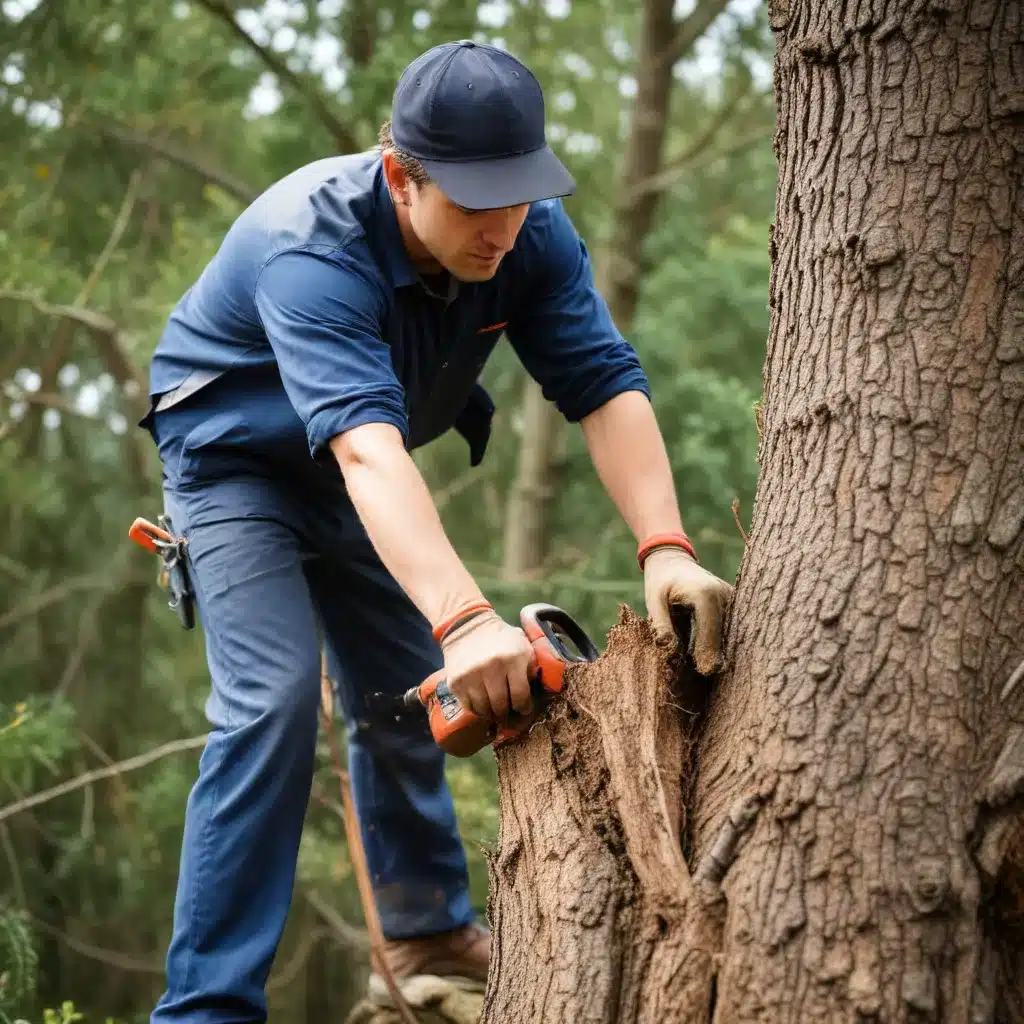
As a tree care specialist for TriCounty Tree Care, I’ve witnessed firsthand the profound impact that tree care decisions can have on the health and longevity of urban forests. While the allure of a do-it-yourself (DIY) approach to tree maintenance may seem cost-effective in the short term, the long-term consequences of such actions can reverberate through the very fabric of our local ecosystems.
Types of Tree Care
DIY Tree Care often involves well-intentioned homeowners attempting to prune, treat, or remove trees on their own, without the guidance of trained professionals. While this approach may provide a sense of control and immediate gratification, it frequently fails to account for the complex biological needs of trees and the delicate balance of the surrounding environment.
In contrast, Professional Tree Care leverages the expertise of certified arborists and landscape professionals who possess a deep understanding of tree physiology, proper pruning techniques, and sustainable management practices. These specialists are equipped to assess the unique requirements of each tree and implement tailored solutions that prioritize long-term health and ecological harmony.
Considerations in Tree Care
The decision to pursue DIY or professional tree care must be weighed carefully, taking into account the tree’s health, longevity, and the environmental impact of the chosen approach.
Tree Health: Improper pruning, misdiagnosed pests or diseases, and the use of unsuitable products can severely compromise a tree’s structural integrity and overall vitality. A trained arborist can identify and address these issues before they escalate, ensuring the tree’s continued growth and resilience.
Tree Longevity: The lifespan of a tree is not solely determined by its initial planting or establishment, but by the care it receives throughout its lifetime. Professional management strategies, such as routine inspections, timely interventions, and proactive maintenance, can extend a tree’s lifespan and preserve the invaluable benefits it provides to the surrounding environment.
Environmental Impact: Trees play a crucial role in regulating local microclimates, supporting biodiversity, and sequestering carbon dioxide. Disrupting their natural balance through ill-advised actions can have far-reaching consequences, from soil erosion and water quality issues to the displacement of wildlife and the acceleration of climate change.
The Ripple Effect of Tree Care
Short-Term Consequences
The immediate impact of DIY tree care can be visually striking, as improper pruning or misguided removal decisions can dramatically alter the aesthetic appeal of a property. However, these short-term changes often mask the deeper, long-term implications that reverberate through the local ecosystem.
Long-Term Consequences
Ecosystem Disruption: When trees are compromised or removed, the delicate web of interdependencies that sustains the surrounding environment is disrupted. This can lead to the loss of vital habitats, the decline of pollinator populations, and the destabilization of soil and water systems, ultimately impacting the overall health and resilience of the local ecosystem.
Urban Canopy Decline: The cumulative effect of numerous DIY tree care decisions can result in a gradual erosion of the urban tree canopy, a critical component of livable, sustainable cities. As the canopy thins, the community loses the benefits of improved air quality, reduced energy consumption, and enhanced property values that healthy, mature trees provide.
Understanding Tree Biology
To fully appreciate the consequences of our tree care decisions, it’s essential to understand the complex biology and ecology of these living, breathing organisms.
Tree Anatomy and Function
Root Systems: Trees possess an intricate network of roots that extend far beyond the visible trunk and canopy. These roots are responsible for anchoring the tree, absorbing water and nutrients, and establishing a symbiotic relationship with the surrounding soil microbiome.
Canopy Structure: The upper portion of a tree, known as the canopy, is a dynamic and interconnected system of branches, leaves, and reproductive structures. This canopy plays a vital role in photosynthesis, transpiration, and the regulation of the local microclimate.
Tree-Environment Interactions
Nutrient Cycling: Trees are integral components of nutrient cycling, drawing essential minerals from the soil and, through the decomposition of fallen leaves and branches, replenishing the very ground that sustains them.
Microclimate Regulation: The presence of trees can significantly influence the local microclimate, providing shade, regulating air temperature, and modulating wind patterns, all of which have a profound impact on the surrounding ecosystem.
Sustainable Tree Management
Best Practices for DIY Tree Care
While DIY tree care should be approached with caution, there are certain pruning techniques and pest/disease management strategies that conscientious homeowners can employ to support the health and longevity of their trees. These include:
- Selective pruning to remove dead, damaged, or diseased branches, while preserving the tree’s structural integrity and natural form.
- The judicious use of organic, eco-friendly pest control methods and the avoidance of harsh chemical treatments.
- Regularly monitoring trees for signs of stress or disease and addressing any issues in a timely manner.
Integrating Professional Expertise
For more complex tree care needs or when long-term sustainability is the priority, consulting a certified arborist is highly recommended. These professionals can conduct comprehensive tree assessments, identify potential risks, and develop customized management plans that balance the needs of the tree with the preservation of the surrounding environment.
By recognizing the profound ripple effect of our tree care decisions and embracing a more sustainable approach, we can ensure that the urban forests we cherish today continue to thrive and provide invaluable benefits for generations to come. To learn more about our comprehensive tree care services, please visit TriCounty Tree Care.


